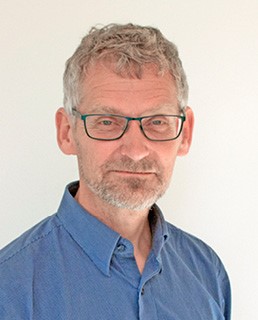The way of living today, not least how we travel, put our planet under an unsustainable pressure. The term “planetary boundaries” is developed within earth science, and in short, is a way of expressing how much the planet can tolerate. If we don’t adapt our lifestyle to fit these defined boundaries, we risk causing changes in the ecosystem that will impact on the conditions for all life on earth.

At the same time as many are using much too much of the planet’s resources, there are others who don’t get a piece of the pie at all.
Claus Hedegaard Sørensen is a senior researcher at VTI and studies how public transport can provide more equal access to transport for all groups in society, and at the same time contribute to a transport system that takes into consideration planetary boundaries. The work is undertaken through a newly started project at K2, the Swedish Knowledge Centre for Public Transport.
“Many people travel too much, which results in a very high pressure on the planet. At the same time there are groups in society that have limited access to mobility, which affects their possibilities to participate in society and develop”, says Claus Hedegaard Sørensen.
“Public transport can play a critical role in levelling out these differences and provide all groups in society with adequate possibilities to travel in a way that also takes into consideration planetary boundaries”, continues Claus.
The research project is based on the so called “doughnut-model”, a conceptual model that describes the need to satisfy basic needs in a way that takes into consideration also ecological sustainability. The model will now, for the first time, be applied to public transport in a study of Södertälje.
Firstly, the researchers define the social and planetary boundaries for public transport in Södertälje, Sweden. This can, for example, be defining where the boundary is to be drawn for the lowest access to different service functions, highest carbon dioxide emissions per person, or how much travel should cost. Following this, simulation studies are used to produce different options for how public transport could look like without exceeding these boundaries.
The project will also contribute with knowledge about how these future scenarios for Södertälje can be promoted as a desirable development. This is important since the high mobility society in which we are used to live might imply substantial resistance to changes of this character
“Today, we have crossed several of the planetary boundaries defined by research, and the travel habits of a large global middle- and upper-class are a contributory factor to this. In order to stay within both social and planetary boundaries, we need to develop an environmentally sustainable and fair transport system that contributes to attractive cities where people will want to live and work”, Claus Hedegaard Sørensen concludes.
Text: Gunilla Recht

Claus Hedegaard Sørensen
Senior Research Leader, VTI
claus.h.sorensen@vti.se






Follow us: